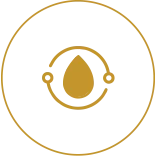The Ancient System Of Pulse Diagnosis Or Nadi Pariksha
Pulse diagnosis is the science of evaluating the current state of a person’s body, mind and spirit.
1. What is Nadi?
The Nadi, or pulse, is the vital flow of life force that courses through subtle channels all over the body which enables the Ayurveda doctor (Vaidya) to examine the different aspects of this flow at certain important locations in the body.
2) When is the pulse diagnosis done?
As a rule observed in pulse examination, the examination is carried out preferably in the morning after shower and on an empty stomach. The pulse is not examined immediately after a bath, or oil massage, nor when the patient is hungry or thirsty. The examination can also be carried out in the later part of the day provided the patient has not taken food for three hours.
3) Traditionally learned
Pulse diagnosis is a body of knowledge handed down in the Gurukula or teacher-student tradition. Its use as a diagnostic tool for discovering imbalances in physiology is not widely known or practiced because of the traditional way this knowledge has been passed on from a master to a disciple, thus producing few practitioners.
4) Thorough reading and understanding of the pulse
Complimenting western diagnostics that record the rate of the pulse, an Ayurvedic physician’s methodology looks into the pulse-reading involving touching, feeling, observing, and experiencing not only the rate, rhythm, and volume of the pulse; but also its movement, amplitude, temperature, force, and consistency in the body. It is a tool toward understanding the body in its entirety. The beauty of this is that the symptoms of disease manifest in the pulse long before they do in the body.
For example, when a chemical imbalance occurs in the blood it produces an aggregate effect detectable in the blood much earlier than any symptoms which might arise in the body.
5) Three barometers of diagnosis
Ayurvedic practice highlights three pathways of diagnosis: darshana (see and observe), sparshana (touch), and prashna (inquire by asking questions).
Ayurveda is a science that asserts the unity of mind, body, spirit, in other words, mental, emotional, physical aspects of physiology. Learning something about one facet gives understanding of all three aspects of life, and pulse yields this insight about the total person. This is one reason for having a pulse assessment.
At a superficial level of pulse reading, the present state of the mind and body system is assessed. For example, if there is a strong emotion, if digestion in the stomach is going on all right, all these along with many other states of being can be detected
In higher level of expertise, a deeper level of pulse can be understood which gives a record of past stresses and birth information like physical and mental prakruti or constitution.
Constitutional (prakruti) assessment is extremely important because this information gives understanding which diet, activities, herbs, emotions, among other aspects can have either a favorable or negative effect upon a given individual. It helps predict what kind of imbalances or diseases that person is most susceptible to. It also gives clues about whether or not one expresses the natural attributes of one’s own prakruti.
6) It describes an ideal state
Further, it describes the innate balance of the doshic principles which acts as a goal for balancing in that individual. It is said that that knowing something about one point in time promotes knowledge of all points in time–past, present, future. In the same way, mental constitution assessment yields a picture of the way one is likely to think and act spontaneously when in balanced physiology or good health.
Another reason for having a pulse assessment is to discover any imbalances in one of the three interacting principles–vata, pitta, kapha. Balance of these principles, felt in the pulse, is a necessary sign of health. Finding the imbalance helps to find the root cause of disease and suggest remedial action for restoring balance. Of course, there are many predisposing factors such as genes, congenital factors, trauma, etc; but what brings about the manifestation is a dosha imbalance followed by the other factors.










